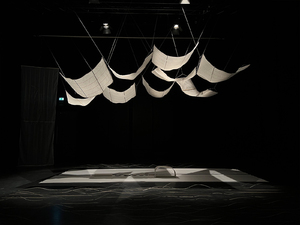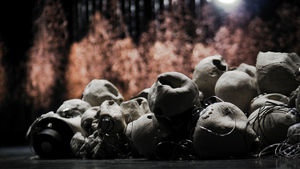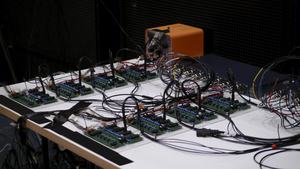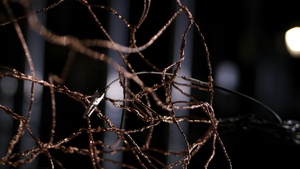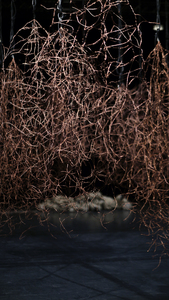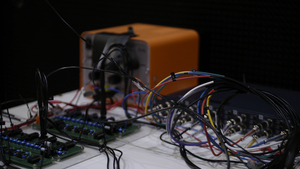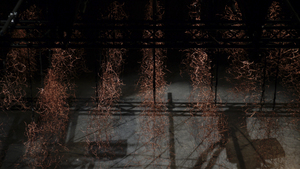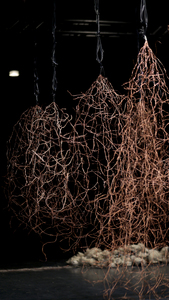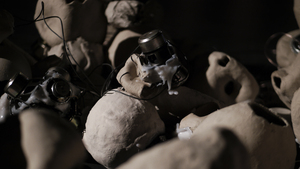"Druckerzeugnisse der HfG"
| Begriff | Druckerzeugnisse der HfG |
| Metakey | Freigabe Nutzung HfG (rights:usage_hfg) |
| Typ | Keyword |
| Vokabular | Rechte |
1592 Inhalte
- Seite 1 von 133
Endresultat "Die Inseln" 03
- Titel
- Endresultat "Die Inseln" 03
- Autor/in
- Kategorie
- Titel
- Endresultat "Die Inseln" 03
- Urheberrechtshinweis
- © Yinxuan Chen
- Rechtsschutz/Lizenz
- Freigabe Nutzung HfG
- Medienersteller/in
- Beziehung/Funktion
- Projektleiter/in
- Semester
- Studiengang
- Typ der Abschlussarbeit
- Importiert am
- 14.11.2024
- Übergeordnete Sets
- 1
Ephemeral Antipodes
- Titel
- Ephemeral Antipodes
- Autor/in
- Datierung
- 02/03/2023
- Titel
- Ephemeral Antipodes
- Titel (en)
- Ephemeral Antipodes
- Urheberrechtshinweis
- © Lena Zwerina
- Rechtsschutz/Lizenz
- Freigabe Nutzung HfG
- Medienersteller/in
- Beziehung/Funktion
- Projektleiter/in
- Semester
- Studiengang
- Typ der Abschlussarbeit
- Importiert am
- 03.12.2024
- Übergeordnete Sets
- 1
Ephemeral Antipodes
- Titel
- Ephemeral Antipodes
- Autor/in
- Datierung
- 02/03/2023
- Titel
- Ephemeral Antipodes
- Titel (en)
- Ephemeral Antipodes
- Urheberrechtshinweis
- © Lena Zwerina
- Rechtsschutz/Lizenz
- Freigabe Nutzung HfG
- Medienersteller/in
- Beziehung/Funktion
- Projektleiter/in
- Semester
- Studiengang
- Typ der Abschlussarbeit
- Importiert am
- 03.12.2024
- Übergeordnete Sets
- 1
Ephemeral Antipodes
- Titel
- Ephemeral Antipodes
- Autor/in
- Datierung
- 02/03/2023
- Titel
- Ephemeral Antipodes
- Titel (en)
- Ephemeral Antipodes
- Urheberrechtshinweis
- © Max Viktor Herbert,Victor van Wetten,Eva Csonka,Lena Zwerina
- Rechtsschutz/Lizenz
- Freigabe Nutzung HfG
- Medienersteller/in
- Beziehung/Funktion
- Medien-Beschreibung
- Performance von Kiesecker-Hoess
- Medien-Beschreibung (en)
- Performance by Kiesecker-Hoess
- Projektleiter/in
- Semester
- Studiengang
- Typ der Abschlussarbeit
- Importiert am
- 03.12.2024
- Übergeordnete Sets
- 1
Ephemeral Antipodes
- Titel
- Ephemeral Antipodes
- Autor/in
- Datierung
- 02/03/2023
- Titel
- Ephemeral Antipodes
- Titel (en)
- Ephemeral Antipodes
- Urheberrechtshinweis
- © Lena Zwerina
- Rechtsschutz/Lizenz
- Freigabe Nutzung HfG
- Medienersteller/in
- Beziehung/Funktion
- Projektleiter/in
- Semester
- Studiengang
- Typ der Abschlussarbeit
- Importiert am
- 03.12.2024
- Übergeordnete Sets
- 1
Ephemeral Antipodes
- Titel
- Ephemeral Antipodes
- Autor/in
- Datierung
- 02/03/2023
- Titel
- Ephemeral Antipodes
- Titel (en)
- Ephemeral Antipodes
- Urheberrechtshinweis
- © Lena Zwerina
- Rechtsschutz/Lizenz
- Freigabe Nutzung HfG
- Medienersteller/in
- Beziehung/Funktion
- Projektleiter/in
- Semester
- Studiengang
- Typ der Abschlussarbeit
- Importiert am
- 03.12.2024
- Übergeordnete Sets
- 1
Ephemeral Antipodes
- Titel
- Ephemeral Antipodes
- Autor/in
- Datierung
- 02/03/2023
- Titel
- Ephemeral Antipodes
- Titel (en)
- Ephemeral Antipodes
- Urheberrechtshinweis
- © Lena Zwerina
- Rechtsschutz/Lizenz
- Freigabe Nutzung HfG
- Medienersteller/in
- Beziehung/Funktion
- Projektleiter/in
- Semester
- Studiengang
- Typ der Abschlussarbeit
- Importiert am
- 03.12.2024
- Übergeordnete Sets
- 1
Ephemeral Antipodes
- Titel
- Ephemeral Antipodes
- Autor/in
- Datierung
- 02/03/2023
- Titel
- Ephemeral Antipodes
- Titel (en)
- Ephemeral Antipodes
- Urheberrechtshinweis
- © Lena Zwerina
- Rechtsschutz/Lizenz
- Freigabe Nutzung HfG
- Medienersteller/in
- Beziehung/Funktion
- Projektleiter/in
- Semester
- Studiengang
- Typ der Abschlussarbeit
- Importiert am
- 03.12.2024
- Übergeordnete Sets
- 1
Ephemeral Antipodes
- Titel
- Ephemeral Antipodes
- Autor/in
- Datierung
- 02/03/2023
- Titel
- Ephemeral Antipodes
- Titel (en)
- Ephemeral Antipodes
- Urheberrechtshinweis
- © Lena Zwerina
- Rechtsschutz/Lizenz
- Freigabe Nutzung HfG
- Medienersteller/in
- Beziehung/Funktion
- Projektleiter/in
- Semester
- Studiengang
- Typ der Abschlussarbeit
- Importiert am
- 03.12.2024
- Übergeordnete Sets
- 1
Ephemeral Antipodes
- Titel
- Ephemeral Antipodes
- Autor/in
- Datierung
- 02/03/2023
- Titel
- Ephemeral Antipodes
- Titel (en)
- Ephemeral Antipodes
- Urheberrechtshinweis
- © Lena Zwerina
- Rechtsschutz/Lizenz
- Freigabe Nutzung HfG
- Medienersteller/in
- Beziehung/Funktion
- Projektleiter/in
- Semester
- Studiengang
- Typ der Abschlussarbeit
- Importiert am
- 03.12.2024
- Übergeordnete Sets
- 1
Ephemeral Antipodes
- Titel
- Ephemeral Antipodes
- Autor/in
- Datierung
- 02/03/2023
- Titel
- Ephemeral Antipodes
- Titel (en)
- Ephemeral Antipodes
- Urheberrechtshinweis
- © Lena Zwerina
- Rechtsschutz/Lizenz
- Freigabe Nutzung HfG
- Medienersteller/in
- Beziehung/Funktion
- Projektleiter/in
- Semester
- Studiengang
- Typ der Abschlussarbeit
- Importiert am
- 03.12.2024
- Übergeordnete Sets
- 1
Ephemeral Antipodes
- Titel
- Ephemeral Antipodes
- Autor/in
- Datierung
- 02/03/2023
- Titel
- Ephemeral Antipodes
- Titel (en)
- Ephemeral Antipodes
- Urheberrechtshinweis
- © Lena Zwerina
- Rechtsschutz/Lizenz
- Freigabe Nutzung HfG
- Medienersteller/in
- Beziehung/Funktion
- Projektleiter/in
- Semester
- Studiengang
- Typ der Abschlussarbeit
- Importiert am
- 03.12.2024
- Übergeordnete Sets
- 1
